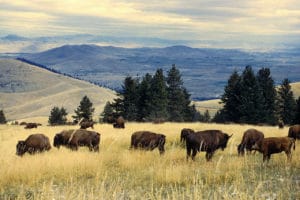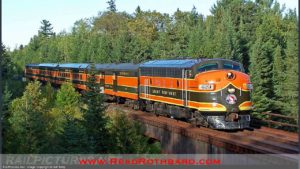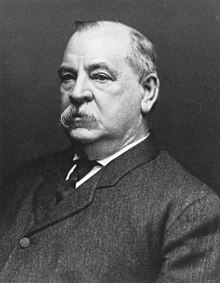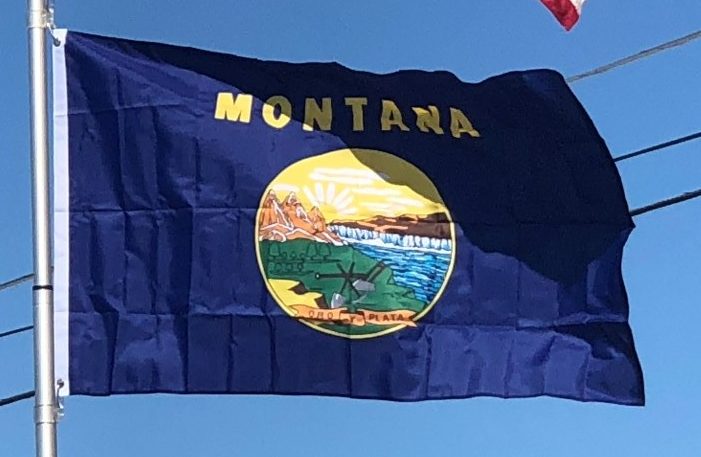Simultaneously with these conflicts, bison, a keystone species and the primary protein source that Native people had survived on for centuries were being destroyed.

Some estimates say there were over 13 million bison in Montana in 1870. In 1875, General Philip Sheridan pleaded to a joint session of Congress to authorize the slaughtering of herds in order to deprive the Indians of their source of food. By 1884, commercial hunting had brought bison to the verge of extinction; only about 325 bison remained in the entire United States.
Railroads:
Tracks of the Northern Pacific Railroad reached Montana from the west in 1881 and from the east in 1882. However, the railroad played a major role in sparking tensions with Native American tribes in the 1870s. Jay Cooke, the NPR president launched major surveys into the Yellowstone valley in 1871, 1872 and 1873 which were challenged forcefully by the Sioux under chief Sitting Bull. These clashes, in part, contributed to the Panic of 1873, a financial crisis that delayed construction of the railroad into Montana. Surveys in 1874, 1875 and 1876 helped spark the Great Sioux War of 1876. The transcontinental NPR was completed on September 8, 1883, at Gold Creek.
Tracks of the Great Northern Railroad reached eastern Montana in 1887 and when they reached the northern Rocky Mountains in 1890, the GNR became a significant promoter of tourism to Glacier National Park region. The transcontinental GNR was completed on January 6, 1893, at Scenic, Washington.

In 1881, the Utah and Northern Railway a branch line of the Union Pacific completed a narrow gauge line from northern Utah to Butte. A number of smaller spur lines operated in Montana from 1881 into the 20th century including the Oregon Short Line, Montana Railroad and Milwaukee Road.
Statehood:
Under Territorial Governor Thomas Meagher, Montanans held a constitutional convention in 1866 in a failed bid for statehood. A second constitutional convention was held in Helena in 1884 that produced a constitution ratified 3:1 by Montana citizens in November 1884. For political reasons, Congress did not approve Montana statehood until 1889. Congress approved Montana statehood in February 1889 and President Grover Cleveland signed an omnibus bill granting statehood to Montana, North Dakota, South Dakota and Washington once the appropriate state constitutions were crafted.

In July 1889, Montanans convened their third constitutional convention and produced a constitution accepted by the people and the federal government. On November 8, 1889 President Benjamin Harrison proclaimed Montana the forty-first state in the union. The first state governor was Joseph K. Toole. In the 1880s, Helena had more millionaires per capita than any other United States city.
Homesteading:
The Homestead Act of 1862 provided free land to settlers who could claim and “prove-up” 160 acres of federal land in the Midwest and western United States. Montana did not see a large influx of immigrants from this act because 160 acres was usually insufficient to support a family in the arid territory. By 1880, there were farms in the more verdant valleys of central and western Montana, but few on the eastern plains.
